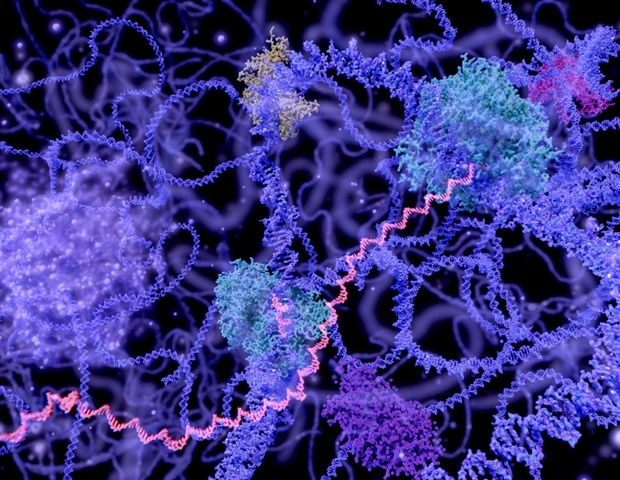In a recent study published in the journal Science Advances, researchers in Sweden conducted virtual screens of over 16 million compounds using multiple receptor models developed by AlphaFold and homology modeling techniques. These models were based on different protein structures to identify trace amine-associated receptor 1 (TAAR1) agonists for the potential treatment of various neuropsychiatric conditions. They found that the AlphaFold-based screen had a higher hit rate and helped discover potent TAAR1 agonists, leading to a promising drug candidate that showed physiological effects in mice.
 Study: AlphaFold accelerated discovery of psychotropic agonists targeting the trace amine–associated receptor 1. Image Credit: Corona Borealis Studio / Shutterstock
Study: AlphaFold accelerated discovery of psychotropic agonists targeting the trace amine–associated receptor 1. Image Credit: Corona Borealis Studio / Shutterstock
Background
The advent of machine learning methods, including AlphaFold, has revolutionized protein structure prediction, achieving near-experimental accuracy and providing models for many therapeutically relevant proteins such as G-protein coupled receptors (GPCRs). This has generated significant interest in the use of AlphaFold models for drug design, as access to precise protein structures can potentially accelerate drug discovery. However, studies comparing AlphaFold to experimentally determined GPCR structures have shown mixed results for AlphaFold’s effectiveness in predicting GPCR-drug complexes. Although AlphaFold can model binding sites with high accuracy, these studies highlighted that the predicted ligand binding modes often differed from those derived from experimentally determined structures. While AlphaFold is reported to model binding sites with high accuracy, the performance in docking simulations and virtual screenings often lags behind experimentally determined structures. This discrepancy suggests that while AlphaFold may outperform traditional homology models in some aspects, it still requires further refinement to accurately predict dynamic protein-ligand interactions. These findings suggest that while AlphaFold is superior to traditional homology models, it may not yet be entirely suitable for structure-based drug design, highlighting the need for further optimization of these models to improve their accuracy in predicting protein-ligand interactions.
TAAR1, a GPCR with no available experimental structure at the time of the study, was a key focus of this research because of its potential as a drug target. The researchers aimed to explore the effectiveness of AlphaFold models in structure-based virtual screening, particularly for TAAR1 agonists, and to compare these results with traditional homology modeling techniques.
About the study
To assess the effectiveness of AlphaFold versus homology models in identifying TAAR1 ligands, the researchers generated multiple models for TAAR1 using both techniques and conducted two comprehensive structure-based virtual screens. These screens involved docking a library of 16 million fragment-like compounds, evaluating their potential as TAAR1 ligands based on docking scores and predicted binding modes. The performance of these models was compared based on their ability to enrich known TAAR1 ligands and to predict accurate receptor-agonist complexes. The docking screens involved assessing 218 trillion complexes, with successful docking of 6.8 million compounds to AlphaFold models and 11.3 million to homology models.
The research focused on analyzing the structural differences between AlphaFold and homology models, particularly in the size and shape of the TAAR1 binding site. To evaluate the structure-activity relationships of TAAR1 activation, researchers used compound 30, previously identified as the most potent from an AlphaFold screen. An array of analogs was then generated. These compounds were docked to AlphaFold models, with a particular focus on how these models represented the orthosteric site and other critical binding regions. Sixteen promising analogs were selected for further evaluation. Various assays were employed to assess the compounds’ agonist activity, which evaluated activity across 27 aminergic GPCRs. Additionally, a cyclic adenosine 3′,5′-monophosphate (cAMP) accumulation assay was used to measure potency, and pharmacokinetic profiling was conducted to assess solubility, plasma protein binding, permeability, and metabolic stability.
Furthermore, in vivo studies were performed, which involved measuring core-body temperature (CBT) in TAAR1-wild-type (TAAR1-WT) and TAAR1-knockout (TAAR1-KO) mice, pre-pulse inhibition (PPI) tests, and locomotion experiments to evaluate the antipsychotic-like effects of the compounds. In addition to evaluating these physiological effects, structural comparisons were made between the AlphaFold models and newly released cryo-electron microscopy (cryo-EM) structures of TAAR1. These comparisons revealed that AlphaFold models provided a more compact representation of the binding pocket, which influenced the docking results and binding mode predictions.
Results and discussion
The study found that AlphaFold models outperformed homology models in virtual screening, achieving a 60% hit rate compared to a 22% hit rate from the homology model screen. The AlphaFold-derived agonists displayed higher potency and diverse chemical structures. This higher hit rate was attributed to AlphaFold’s more accurate prediction of the extracellular and orthosteric binding sites, although the models struggled with larger synthetic ligands. Compound 65 demonstrated high potency and was found to be more effective than ulotaront. Selectivity profiles showed that compounds 30 and 65 were similar to ulotaront but also exhibited activity at additional receptors. Compound 65 showed improved selectivity compared to ulotaront, as well as excellent solubility, low plasma protein binding, good permeability, and favorable metabolic stability.
However, the study also highlighted some limitations of the AlphaFold models. In vivo pharmacokinetic studies revealed rapid distribution of the compound to the brain. Behavioral assays showed that compound 65 effectively reduced CBT in TAAR1-WT mice but had no effect in TAAR1-KO mice. The compound also enhanced PPI in WT mice, similar to risperidone, but not in TAAR1-KO mice. In locomotion tests, compound 65 reduced baseline locomotion and inhibited hyperlocomotion in WT mice but not in TAAR1-KO mice.
The research also emphasized that while AlphaFold models were generally more accurate than homology models, they still had significant limitations. For instance, AlphaFold struggled to predict the dynamic, multiple conformations of GPCRs, a critical aspect in accurately modeling binding sites for larger synthetic ligands. Structural comparisons revealed that AlphaFold models provided more accurate predictions of the extracellular and orthosteric binding sites compared to homology models. Nonetheless, newly released cryo-EM structures demonstrated that experimental data could offer better insights into binding modes, particularly for complex ligands. However, experimental cryo-EM structures showed better alignment with binding modes for larger synthetic ligands. This finding suggests that while AlphaFold is a powerful tool, it may need further refinement or combination with other techniques to fully capture the dynamic nature of GPCR-ligand interactions.
Conclusion
In conclusion, the study suggests that machine learning-predicted structures, such as those generated by AlphaFold, can effectively identify GPCR ligands, accelerating drug discovery for novel targets like TAAR1. However, the study also underscores the need to continue developing these models to enhance their predictive power, particularly for complex ligands and dynamic protein conformations. Among the identified compounds, compound 65 demonstrated greater potency, selectivity, and favorable pharmacokinetic properties compared to ulotaront. It also showed promising antipsychotic-like effects in vivo, making it a potentially strong candidate for developing new treatments for neuropsychiatric disorders.
Journal reference:
- AlphaFold accelerated discovery of psychotropic agonists targeting the trace amine–associated receptor 1. Alejandro Díaz-Holguín et al., Science Advances, 10,eadn1524 (2024), DOI:10.1126/sciadv.adn1524, https://www.science.org/doi/10.1126/sciadv.adn1524








